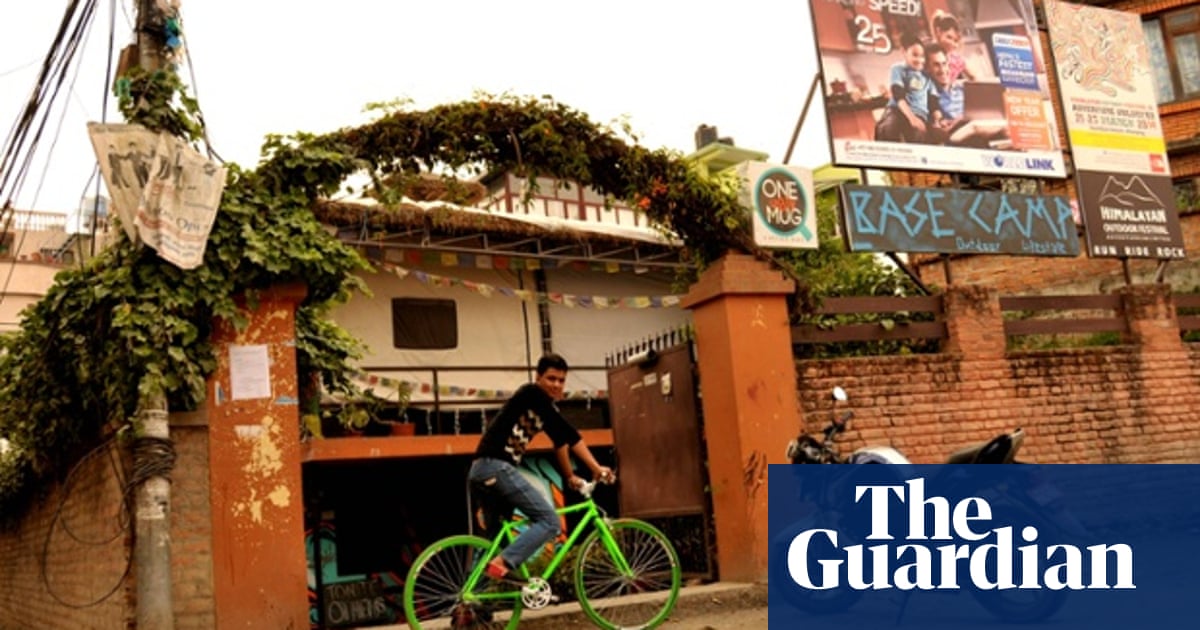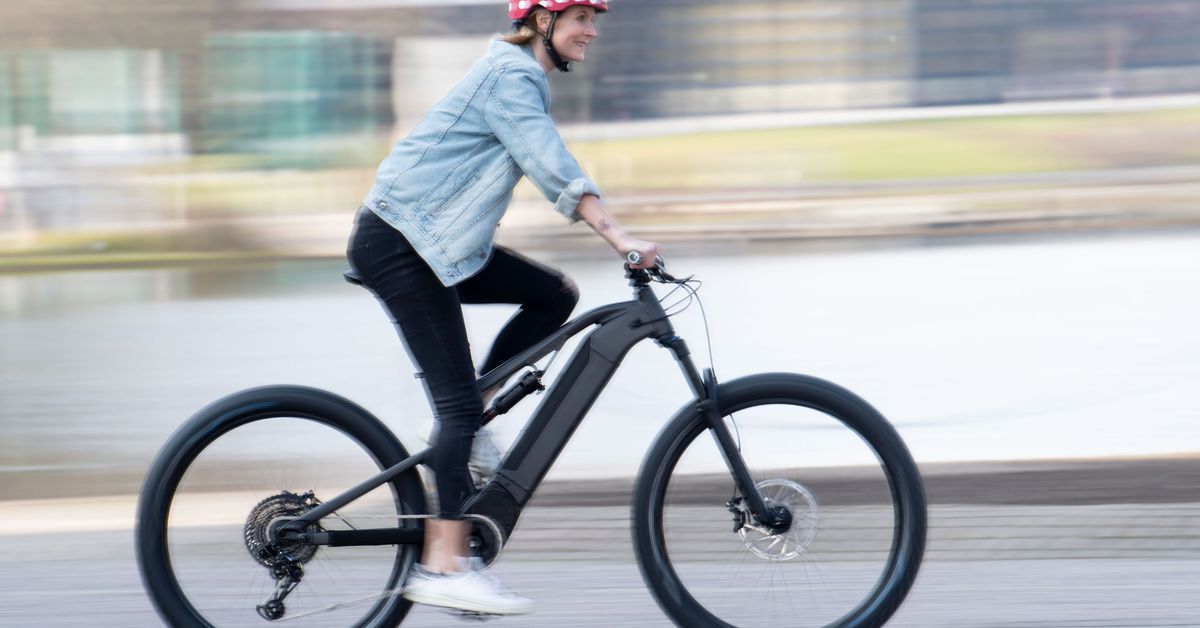Cart Detail
FILTER SEARCH
SEARCH RESULT
Bookmark DETAIL


ID: 202009B6
Created At: 02-Sep-2020 03:01 PM
Can Kathmandu kick the motorbike habit and become cycle-friendly?
City community groups are pushing cycling as a way to cut pollution and improve health in the Nepali capital – but getting on your bike here has implications for your safety and your status
On the underside of a pedestrian bridge on Kantipath, one of central Kathmandu's busiest roads, there is a large hand-painted sign: "Get a bike – you'll never regret." The brightly coloured writing is clearly visible to the tens of thousands of motorists speeding or, depending on the time of day, creeping along the loud, congested road.
It is part of a wider campaign to get more people in the Nepalese capital – one of the world's most polluted cities – cycling. The bike, however, is still viewed by many here as an inferior mode of transport.
There is a deeply sociological dimension to getting around a city, and in Kathmandu the symbolic power of the motorbike rules strong. As Anil Shahi, who works behind the coffee counter at the Base Camp cafe, says: "If someone buys a bicycle, then their status is down."
A few kilometres south of Kantipath, in the neighbourhood of Sanepa, a local community of cyclists has coalesced around Base Camp. The coffee shop, bar and general hangout recently started selling cheep, cheerful and very colourful single-speeds from China, and a bike workshop is attached, run by mechanic Dawa Rumba.
Throughout the day, many young mountain bikers and a couple of single-speed converts come and go. Shahi, too, is a regular cyclist. For him, cycling offers a way to overcome congestion – rather than joining the motorised gridlock, he can zip through one of Kathmandu's many narrower, quieter alleyways to get wherever he needs.
Photograph: Richard Mallett
Numerous organisations and movements have sprung up in recent years here to encourage people to ditch their gas-guzzling cars for a greener mode of transport. Kathmandu Cycle City, for example, is a local non-profit youth network ambitiously dedicated to making Kathmandu a cycle-friendly city by 2020. Their work involves lobbying the government to build cycle lanes throughout the city. The group also part-organises a monthly Critical Mass ride, where local cyclists gather on the last Friday of every month to ride through the city's streets.
But such efforts to make the city greener and its inhabitants healthier must be considered in the context of what it means to be a cyclist in Kathmandu. Nepal's air quality currently ranks 177th out of 178 countries on Yale University's Environmental Performance Index, according to an article on Guardian Cities. Meanwhile recent research shows that the number of global deaths attributable to air pollution has grown by 11% over the last two decades.
Combined with people's everyday experience of moving about the city, the data creates a bit of a paradox for Kathmandu's growing cycling culture. On the one hand, residents are being encouraged to cycle more and help make the capital a safer place by reducing the quantity of carbon monoxide-producing vehicles on the roads. On the other, they are being encouraged to do so in a space characterised by profound risk, in both an acute sense (bad roads, bad driving) and a chronic one (bad air).
Photograph: Richard Mallett
Not that everyone needs encouraging. Fresh from organising the third Himalayan Outdoor Festival in the hills outside Kathmandu – an annual three-day event featuring trail-running and cross-country mountain bike races – Base Camp owner Paresh Shrestha explains that more and more people here are cycling, not necessarily because of an inclination to 'green up', but rather because vehicle ownership has become so expensive in Nepal.
Cars brought in from other countries are hammered with a 200%-plus import tax, motorised vehicles require the purchase of annual licences, and the price of fuel has been rising fast, with recent increases met with public strikes and violence. The need to do more exercise come into it too.
"The bicycle business is going big. Cycling is growing every day," Shrestha says. "Guys get into trouble with high sugar, high blood pressure … so they're getting into cycling to and from the office."
Cycle newcomers will be joining the hundreds of young Nepali men hopping around on high-end mountain bikes, the odd expat and the many thousands of poorer Kathmandu residents who have little option but to use ancient single speed bicycles to get from A to B or to transport their wares. Rusty old bikes piled high with scrap metal or fruit and veg are a common sight. Most of these bikes originate from India, and while their lone gear isn't exactly ideal for Kathmandu's gradients, they come cheap and are built like workhorses.
Photograph: Richard Mallett
A few years back, an article in The Himalayan Times made the argument that cycling might be part of the solution to air pollution in the valley, calling for a network of bike lanes to accompany a road-widening scheme – although this hasn't really happened.
The decision to get on one's bike comes with clear trade-offs, and while residents who make the switch will eventually help improve the quality of Kathmandu's air, their conversion immediately opens them up to potential new risks. These might take the form of an inappropriate urban layout and woeful cycling infrastructure, a driving culture that works heavily against those on two wheels, or a dangerously polluted atmosphere. Kathmandu has all three.
The community-led cycle organisations are a step in the right direction, but without committed action from the authorities to reorganise and clean up the urban space, the road ahead for cyclists in Nepal's capital looks to be dirty, difficult and dangerous.
• Richard Mallett works as a researcher for the Overseas Development Institute. He has been living in Kathmandu since January, supporting a study into livelihoods, taxation and governance. @rich_mallett
Read more: Could tricks from behavioural science make cycling safer?
See More Product Images:
Related Bookmarks
202004B1
No, e-bikes aren’t cheati...
202005B6
About 4,000 containers st...
202005B21
10 Companies That Control...
It might surprise you that the...
© 2024 PANCBIKE. All rights reserved.
Hand-crafted & Made with : KTM Labs




